- Home
- Alison Weir
Eleanor of Aquitaine: By the Wrath of God, Queen of England Page 3
Eleanor of Aquitaine: By the Wrath of God, Queen of England Read online
Page 3
For the next few years, as his family grew, the Duke remained in his domains, writing poems and fighting useless wars against his unruly vassals, which only served to weaken his position and strengthen theirs. Increasingly self-indulgent, he openly pursued women, even boasting that he would found an abbey for prostitutes near his castle at Niort. He was "brave and gallant, but too much of a jester," finding "pleasure only in one nonsense after another, listening to jests with his mouth wide open in a constant guffaw.''7 Not surprisingly, the Church and many of his more sober contemporaries were outraged by William's behaviour, while his wife maintained a dignified silence and turned increasingly to religion for solace.
Robert d'Arbrissel, founder of the Order of Fontevrault, was a Breton scholar and inspired teacher who wandered the roads of northwestern France with his growing band of followers. A large number were women, attracted by his enlightened and sympathetic view of the female sex, and by his compassion for the outcasts of society. His reputation quickly spread, and Pope Urban II recognised him as an apostolic preacher. Nevertheless, there were those who resented his assertion that women were in many respects the superior sex and made better administrators and managers of property than men. To his critics, this sounded like heresy.
Impressed by what she had heard of d'Arbrissel, the Duchess Philippa persuaded her husband to grant him some land in northern Poitou,
12
near the Angevin border, where he could establish a religious community dedicated to the Virgin Mary. In noo, by a fountain at Fontevrault, near the Raver Vienne, he founded a double monastery for priests, monks, lay brethren, and three hundred segregated nuns, all under the rule of an abbess-- a revolutionary arrangement for its time. In other respects, the abbey followed the rule of St. Benedict. The community was housed in wooden huts and had a simple chapel. In 1119 building commenced on a new stone church, consecrated that year.
The head of the order was the Abbess of Fontevrault; d'Arbrissel stipulated that she had to be nobly born and a widow, in order to confer prestige on the order and ensure that it was administered by someone familiar with running a large household. The office was filled by several notable ladies during the twelfth century, among them Isabella of Anjou, the widow of "William the Atheling, son and heir of King Henry I of England.
By the time of d'Arbrissel's death in 1117, Fontevrault Abbey had become very popular with aristocratic ladies wishing to retire or temporarily retreat from the world; among them was "William IX's first wife, Ermengarde of Anjou, who withdrew there after the death of her second husband. These ladies were accommodated in their own apartments, where they could enjoy worldly status and comforts while living in seclusion. The majority of the nuns came from noble families and had lay sisters as maids, but no one, however humble, was turned away.8 Fontevrault also became a refuge for battered wives and penitent prostitutes, and housed a leper hospital and a home for aged religious. Above all, it quickly earned a reputation for piety and contemplative prayer, and thus fulfilled its founder's aims of enhancing the prestige of women in general and promoting their rights.
Philippa's absorption in what was going on at Fontevrault irritated "William of Aquitaine, and he turned elsewhere for female company. He was again at odds with the Church, having once more been threatened with excommunication. But as the Bishop was about to pronounce the sentence of anathema in the cathedral of Saint-Pierre, William charged in with drawn sword, grabbed the startled prelate by the neck, and threatened to kill him if he did not absolve him. The Bishop stood his ground, and William backed off. "I do not love you enough to send you to Paradise," he sneered.'
In 1115 the Duke had conceived a violent passion for the wife of his vassal Aimery I de Rochefoucauld, Viscount of Chatellerault; she was appropriately named Dangerosa. She had been married to Aimery for seven years and had borne him three children: Hugh, his heir; Raoul; and Aenor. With no regard to the consequences of his actions,
13
William abducted her from her bedchamber and bore her off to his palace at Poitiers, where he appears to have installed her in the newly built Maubergeonne Tower. Soon the affair became notorious, and Dangerosa was nicknamed "La Maubergeonne."10 Aimery made no recorded protest: he was probably afraid of offending his volatile overlord.
When Philippa returned from a visit to Toulouse, she was shocked at what she found and begged the papal legate, Giraud, to remonstrate with William. But it was useless, for the Duke told the bald legate that curls would grow on his pate before he would part with the Viscountess. Even a renewal of the sentence of excommunication against him had no effect on William.11 He defiantly had Dangerosa's portrait painted on his shield, saying that "it was his will to bear her in battle as she had borne him in bed."12 A local hermit cursed this sinful union and predicted that neither William nor his descendants would ever know happiness in their children.13
Philippa refused to tolerate his behaviour. Before the year was out, she retired in grief to Fontevrault, where she died of unknown causes on 28 November 1118. A year or so later, Dangerosa suggested that William's son and heir marry her daughter Aenor. Their marriage may almost certainly be dated to 1121.
Young William was a reluctant bridegroom. Very tall, broad, and robust, with a huge appetite-- it was claimed that he ate enough for ten men-- and a quarrelsome nature, he had inherited some of the Duke's charm but also his violent temper, and he was very resentful of the way in which his father had betrayed and humiliated his mother.14
We know very little about Aenor of Chatellerault, Eleanor's mother. Her position cannot have been an easy one, abandoned by a mother who was branded an adulteress, and then married to a man who did not want her.
Aenor's first child, the daughter who became known to history as Eleanor of Aquitaine, was born in 1122. The exact date is not known, but the year can be determined from evidence of her age at death and from the fact that the lords of Aquitaine swore fealty to her on her fourteenth birthday in 1136. Some chroniclers give 1120 as her birth date, but her parents cannot have been married until 1121. Eleanor's birthplace was probably either the ducal palace at Poitiers or the Ombrière Palace at Bordeaux, although a local tradition claims that she was born in the chateau of Belin near Bordeaux, one of her father's residences. She was christened Alienore, a pun on the Latin alia-Aenor, "the other Eleanor," to differentiate her from her mother,15 although her name is variously spelled in different sources and has been anglicised for this text.
14
Aenor bore William two other children: Petronilla, who is sometimes called Aelith, in c. 1125, and a male heir, William Aigret, around 1126/1127.
On 10 February 1127, William IX died, still excommunicate. In 1122 the deceased Count Bertrand's brother, Alfonso Jordan, had taken possession of Toulouse, but William had no longer had the heart or the energy to try to reclaim it. One of his last poems laments the fact that he must soon leave Poitou for the exile that is death; he craves pardon from his friends and from Jesus Christ, and prays for his heir, soon to be left in a world torn by conflict. Although he passed on his domains intact to his son, who now became William X, he had been unable to curb the aggression and growing independence of his vassals, with the consequence that ducal authority had been even further undermined.
William X's reign was troubled and brief, marred by strife with his vassals and quarrels with the Church. The court at Poitiers seems to have remained an important cultural centre, for although the new Duke was no poet himself, he patronised the troubadours Marcabru and the Gascon Cercamon, both of whom composed eulogistic laments when he died, and perhaps also a Welsh fabulist called Bleddri, who may have told the Poitevin court some very early tales of King Arthur. Troubadours from beyond the Pyrenees, from Aragon, Castile, Navarre, and Italy, were also welcomed at the ducal court.
In 1130 the Church was rent by schism, with rival popes claiming the throne of St. Peter. William rashly supported the antipope Anacletus against Innocent II, which led to Innocent's excommunicating
William and placing Aquitaine under an interdict. In 113 5 William's distant kinsman,16 the formidable and saintly preacher Bernard of Clairvaux, intervened, venturing into the Duke's domains "on God's business"17 and threatening William with divine vengeance if he persisted in his obstinacy. This was too much: as Bernard celebrated mass at Parthenay, William, fully armed, stormed into the church intending to throw him out; but the holy man bore down on him, holding the sacrament aloft. This had such a salutary effect on William that he suffered some kind of seizure or mild stroke and collapsed in fear, foaming at the mouth and unable for a time to move. When he recovered, Bernard attributed it to a miracle, which greatly enhanced his own reputation and left William with no choice but to capitulate.
Humiliation was followed by personal tragedy. In March 1130 the Duchess Aenor and her children took up residence at William's hunting lodge at Talmont on the coast of Poitou, north of La Rochelle. Aenor and young William Aigret died there soon afterwards, leaving Eleanor as her father's heiress-presumptive. At eight years of age, she
15
was old enough to realise that she was a very important little girl-- indeed, the most important in Christendom.
Despite losing her grandfather, mother, and brother at an early age, Eleanor enjoyed a privileged girlhood. Children in those days were required to honour and obey their parents, and any transgressions were usually punished with severe beatings, but the evidence suggests that Eleanor was spoiled. Richard le Poitevin, writing in the 1170s, states that she was "brought up in delicacy and reared with abundance of all delights, living in the bosom of wealth."
Like all courts at that time, William X's was itinerant, and Eleanor would have travelled with him from place to place, residing at his castles, palaces, and hunting lodges. His favourite seat-- and later hers-- was the ancient palace at Poitiers, dating from Merovingian times. Sited on the banks of the River Clain, it was surrounded by beautiful gardens. In the tenth century, William V had partially rebuilt it and erected the great hall, which survives today, much altered; known colloquially as the "hall of lost footsteps," it serves as the antechamber to the Palais de Justice in Poitiers. A more recent addition was the imposing Maubergeonne Tower, in which were situated the ducal apartments. Dangerosa still lived there while Eleanor was a child, but we have no means of knowing how much she influenced her granddaughter.
Another favoured residence was the Ombrière Palace at Bordeaux, a tall keep known as the Crossbowman, which was set in courtyards with tiled fountains and beautiful semitropical gardens. Bordeaux itself had been founded by the Romans, and the walls they had built to encircle it still stood. Just outside these walls was another property used by the ducal family, the Tutelle Palace.
William X owned a number of other keeps and palaces that would have been visited by Eleanor, including those at Limoges, Niort, Saint-Jean d'Angely, Blaye, Melle, and Bayonne. At other times, the court would have stayed in the guest accommodations available in the great abbeys in the region.
Women, as we have seen, played a subordinate role in mediaeval society. During the Dark Ages, when feudal states were being forged out of the ruins of a Roman Empire ravaged by barbarian invasions, life was brutal and uncertain; might generally prevailed over right, and it was male strength that counted. The weaker sex therefore found itself subjugated, the chief functions of noblewomen being to produce heirs to feudal domains and to act as chatelaines of the castles that were springing up all over Europe. The teachings of the Church Fathers, who followed St. Paul in preaching that a woman's role was to learn
16
in silence and be subject to her husband at home, served to sanctify this masculine domination of society. Although in the twelfth century the parallel codes of chivalry and courtly love would go far towards improving the status of women, they did not seriously challenge their subservient role.
Aquitanian laws, laid down in the years before the Church increased its influence in the ducal domains, were generally favourable to women, ensuring that their status in the duchy was higher than elsewhere in feudal Europe. Women could inherit property in their own right and even rule autonomously over lands they inherited. They took a part in public life and, unlike women in northern France, were not kept secluded from men or mainstream society. High-born and wealthy women were renowned for their elegance in dress, yet censured by the Church for their painted cheeks, their charcoal-rimmed eyes, and their oriental perfumes, and females of all classes were notorious for their lax attitude towards morality: in the north it was asserted that the whole duchy was no better than a vast brothel. A wife's adultery was not punished, as elsewhere, by imprisonment or execution: Aquitanians took a sanguine view of such matters.
The formal education of women was rarely considered important. Girls of good birth were taught domestic skills at home or in a convent, and rarely learned to read and write, for it was feared that if they did they would waste their talents writing love letters or reading romances that led to promiscuity.
Eleanor of Aquitaine was a notable exception. Duke William ensured that his daughter, unusually for the time, received some formal education. She was taught to read in her native tongue; Bertran de Born, who addressed many chansons to her, says, "they were not unknown to her, for she can read." She was also given instruction in Latin. While she certainly became acquainted with the gai saber (joyous art) of the troubadours, there is no evidence that she inherited any of her grandfather's poetic talent, as some writers have claimed. Nevertheless, she shared William IX's enjoyment of romantic literature and poetry, and would in time come to patronise troubadours such as Bernard de Ventadour.
Eleanor grew up to be an energetic and consummate sportswoman. She was certainly taught to ride at an early age, and in later life she enjoyed hawking, and kept some royal gyrfalcons at her hunting lodge at Talmont. It is likely that she was also given some tuition in the traditional feminine skills of needlework and household management.
Some biographers have claimed that in later life Eleanor displayed a knowledge of Aristotelian logic, either taught in childhood-- which is
17
highly unlikely-- or learned in the schools of Paris while she was Queen of France. The letters in which this skill is apparent were in fact composed for Eleanor in 1193 by the accomplished royal secretary Peter of Blois, and it is far more likely that it was he rather than his royal mistress who was responsible for the Aristotelian arguments so forcefully set out in them.
Eleanor's name first appears in contemporary records in July 1129, when she, her parents, and her baby brother witnessed a charter granting privileges to the Abbey of Montierneuf in memory of her grandfather, who was buried there. Each inscribed a cross by his or her name, while the infant made a print with a finger dipped in ink. There is no evidence that Eleanor ever learned to write: princes and nobles in those days customarily employed clerks to serve as secretaries and write their letters for them.
The court in which Eleanor grew up was sophisticated and highly civilised and enjoyed a standard of living luxurious for its time. Richard le Poitevin tells us that Eleanor developed a "taste for luxury and refinement." Her patronage of poets and writers in later life suggests that she was captivated early on by the troubadour culture that pervaded aristocratic society in Poitou and Aquitaine. She loved music, delighting in "the melodies of the flute and rejoicing in the harmonies of the musicians. Her young companions sang their sweet songs to the accompaniment of the tabor and cithara,"18 the latter possibly an early type of lute. Above all, she conceived a great love and loyalty for her ancestral domains: throughout her life Aquitaine would always be her first priority.
These were the years that shaped Eleanor's character. She had inherited many of the traits of her forebears, and was energetic, intelligent, sophisticated, headstrong, and perhaps lacking in self-discipLin. She possessed great vitality and, according to William of Newburgh, a lively mind. Impetuous to a fault, she seems to have cared little in her youth for the conventions of the
society in which she lived. Sharing many qualities with that company of ambitious, formidable, and strong-minded female ancestors, she was to surpass them all in fame and notoriety.
Eleanor grew up to be very beautiful: all contemporary sources are agreed on this point, and even in an age when chroniclers routinely eulogised royal and noble ladies, their praise of her was undoubtedly sincere. In youth, she was described as perpulchra -- more than beautiful. Around 1153, the troubadour Bernard de Ventadour called her "gracious, lovely, the embodiment of charm," referring to her "lovely eyes and noble countenance" and declaring that she was "one meet to crown
18
the state of any king." William of Newburgh emphasised the charms of her person, and even when she was old, Pochard of Devizes described her as beautiful, while Matthew Paris, in the thirteenth century, recalled her "admirable beauty."
No one, however, left a description of Eleanor or even recorded the colour of her hair and eyes. Her tomb effigy shows a tall and large-boned woman, but this may not be an accurate representation. Her seal of c. 1152 shows her with a slender figure, but this could in no way be said to be anything other than an impersonal image. However, at the age of fifty-one she was still slim enough to disguise herself as a man, which suggests that she was reasonably tall, lithe, and not too buxom.
The contemporary ideal of beauty was the blue-eyed blonde, and several historians have suggested that the chroniclers would not have been so fulsome in their praises if Eleanor had not conformed to this ideal. However, it is more likely that she had red or auburn hair, since a mural in the chapel of Sainte-Radegonde at Chinon (see Chapter 19), which almost certainly depicts Eleanor and was painted during her lifetime in a region in which she was well known, shows a woman with reddish-brown hair.

 Richard III and the Princes in the Tower
Richard III and the Princes in the Tower Britain's Royal Families: The Complete Genealogy
Britain's Royal Families: The Complete Genealogy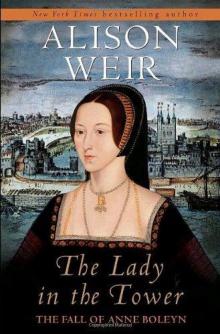 The Lady in the Tower: The Fall of Anne Boleyn
The Lady in the Tower: The Fall of Anne Boleyn Six Wives of Henry VIII
Six Wives of Henry VIII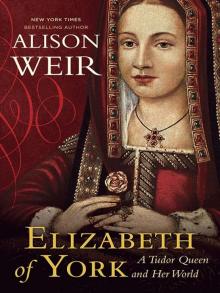 Elizabeth of York: A Tudor Queen and Her World
Elizabeth of York: A Tudor Queen and Her World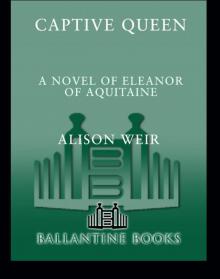 Captive Queen
Captive Queen Innocent Traitor
Innocent Traitor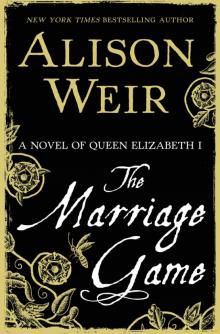 The Marriage Game
The Marriage Game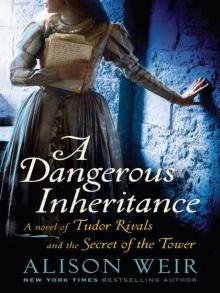 A Dangerous Inheritance
A Dangerous Inheritance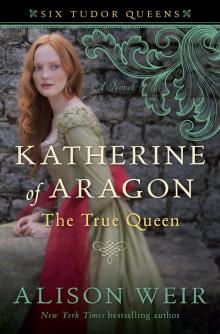 Katherine of Aragón: The True Queen
Katherine of Aragón: The True Queen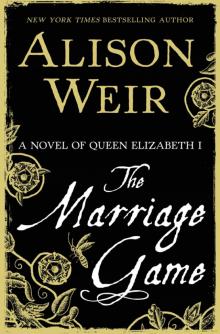 The Marriage Game: A Novel of Queen Elizabeth I
The Marriage Game: A Novel of Queen Elizabeth I Princes in the Tower
Princes in the Tower Anne Boleyn: A King's Obsession
Anne Boleyn: A King's Obsession Traitors of the Tower
Traitors of the Tower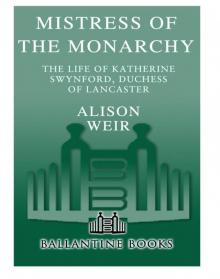 Mistress of the Monarchy: The Life of Katherine Swynford, Duchess of Lancaster
Mistress of the Monarchy: The Life of Katherine Swynford, Duchess of Lancaster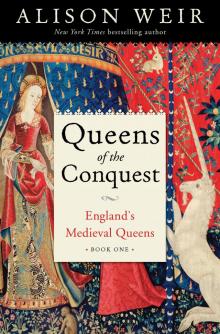 Queens of the Conquest: England’s Medieval Queens
Queens of the Conquest: England’s Medieval Queens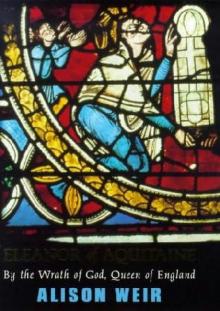 Eleanor of Aquitaine: A Life
Eleanor of Aquitaine: A Life Mary, Queen of Scots, and the Murder of Lord Darnley
Mary, Queen of Scots, and the Murder of Lord Darnley Henry VIII: The King and His Court
Henry VIII: The King and His Court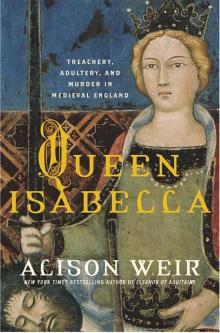 Queen Isabella: Treachery, Adultery, and Murder in Medieval England
Queen Isabella: Treachery, Adultery, and Murder in Medieval England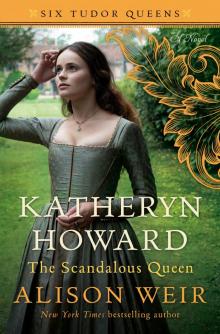 Katheryn Howard, the Scandalous Queen
Katheryn Howard, the Scandalous Queen Arthur- Prince of the Roses
Arthur- Prince of the Roses The Wars of the Roses
The Wars of the Roses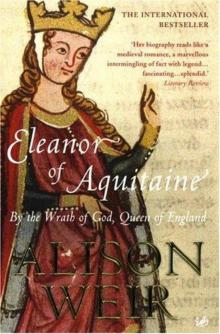 Eleanor of Aquitaine: By the Wrath of God, Queen of England
Eleanor of Aquitaine: By the Wrath of God, Queen of England Mary Boleyn: The Great and Infamous Whore
Mary Boleyn: The Great and Infamous Whore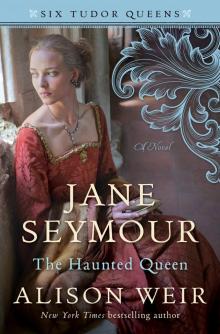 Jane Seymour: The Haunted Queen
Jane Seymour: The Haunted Queen Anna of Kleve, the Princess in the Portrait
Anna of Kleve, the Princess in the Portrait Lancaster and York: The Wars of the Roses
Lancaster and York: The Wars of the Roses The Grandmother's Tale
The Grandmother's Tale The Princess of Scotland (Six Tudor Queens #5.5)
The Princess of Scotland (Six Tudor Queens #5.5)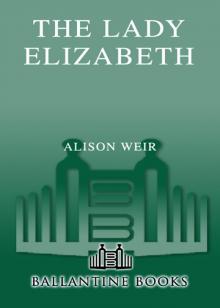 The Lady Elizabeth
The Lady Elizabeth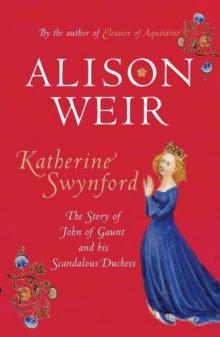 Katherine Swynford: The Story of John of Gaunt and His Scandalous Duchess
Katherine Swynford: The Story of John of Gaunt and His Scandalous Duchess The Curse of the Hungerfords
The Curse of the Hungerfords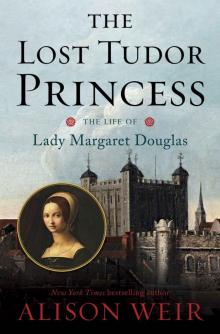 The Lost Tudor Princess: The Life of Lady Margaret Douglas
The Lost Tudor Princess: The Life of Lady Margaret Douglas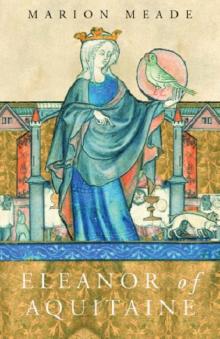 Eleanor of Aquitaine
Eleanor of Aquitaine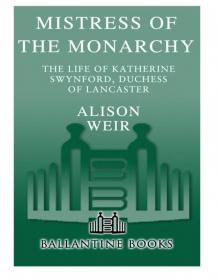 Mistress of the Monarchy
Mistress of the Monarchy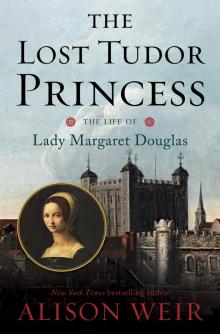 The Lost Tudor Princess
The Lost Tudor Princess Henry VIII
Henry VIII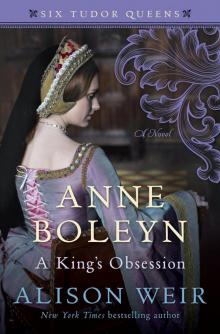 Anne Boleyn, a King's Obsession
Anne Boleyn, a King's Obsession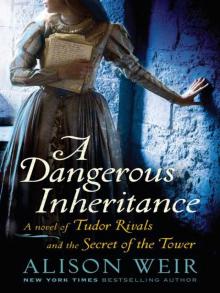 A Dangerous Inheritance: A Novel of Tudor Rivals and the Secret of the Tower
A Dangerous Inheritance: A Novel of Tudor Rivals and the Secret of the Tower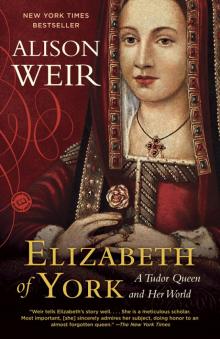 Elizabeth of York
Elizabeth of York Katherine of Aragon, the True Queen
Katherine of Aragon, the True Queen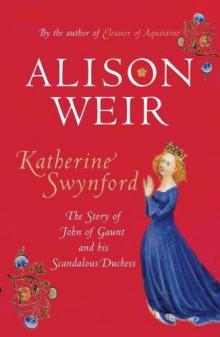 Katherine Swynford
Katherine Swynford Wars of the Roses
Wars of the Roses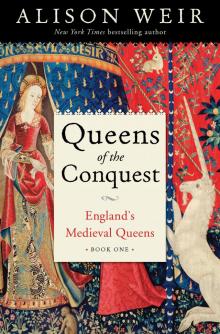 Queens of the Conquest
Queens of the Conquest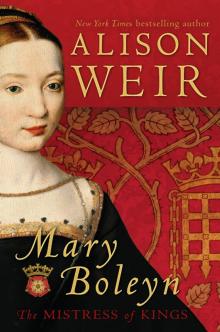 Mary Boleyn
Mary Boleyn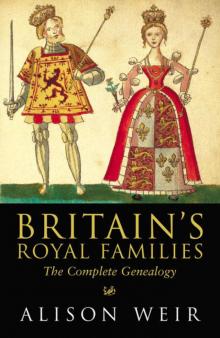 Britain's Royal Families
Britain's Royal Families The Tower Is Full of Ghosts Today
The Tower Is Full of Ghosts Today Life of Elizabeth I
Life of Elizabeth I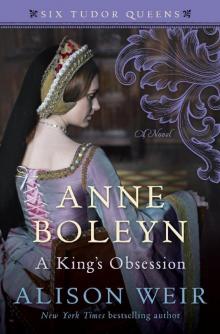 Anne Boleyn A King's Obssession
Anne Boleyn A King's Obssession Lancaster and York
Lancaster and York Jane Seymour, the Haunted Queen
Jane Seymour, the Haunted Queen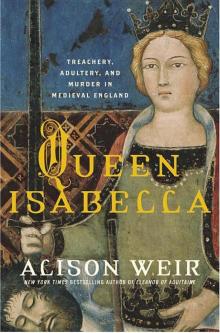 Queen Isabella
Queen Isabella The princes in the tower
The princes in the tower